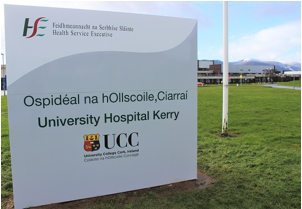
- To contribute to the UHK’s policies of providing safe, effective care to their community
- To speed up the patients journey through the system via a quicker turnaround of patient/client notes with a reduction in the time it takes to send letters to the patient/client
- To provide an effective, economic and efficient administration service
- To maximise the use of technology and eliminate waste
- To ensure equitable access to administrative services
- More efficient use of secretarial time
- No overtime costs
- No temporary employee costs
- Comprehensive analysis of workflow
- Compatible with the introduction of an electronic case record
- Non-replacement of lost, broken or worn out analogue tape machines
- Complete removal of temporary cover when secretaries are off sick or on annual leave
- Removal of costly administrative vacancies
- Reducing the turnaround times for reports & patient notes
- Increasing the number of clinicians without increasing the secretarial resource
UHK Background
University Hospital Kerry serves a remote, rural population of 145,048 and in addition to providing acute services to the population of Kerry, also services parts of West Limerick and North Cork. There are over 90,000 outpatient appointments scheduled annually; in 2013 UHK recorded 36,517 ED presentations, 13,198 inpatient discharges, and 10,871 day case attendances, and volumes are increasing. Each patient interaction requires a detailed medical record of the process to be created. This is essential for the management of the patient episode and to meet statutory obligations. There are several different types of medical report dependant on the nature of the care episode and the time it takes to produce reports has a critical impact on the efficiency and overall duration of the patient pathway.
UHK formerly utilised analogue tapes and dictaphones for dictation. The technology was antiquated and the business processes surrounding it had not changed in the hospital environment for decades. After dictation, the author passed the tapes to individual secretaries who then typed up the correspondence from the tape. There were many drawbacks with the system. The limitations of the analogue ‘tape based’ system in use across every department in the hospital was evident daily. Tape breakages, missing tapes, lack of backup and diminishing tape quality due to increased wear and tear were inherent factors associated with the system. It was difficult to prioritize and share workload between secretaries. It was impossible to get management information on the timescales and status of document production. There were significant delays in patient discharges due to delayed documentation, leading to an increase in the Average Length of Stay (AVLOS), a metric against which the hospital is measured for effectiveness, causing significant bed blockages, delayed admission for sick patients and loss of reputation.
The Solution
The T-Pro solution is a versatile digital dictation, speech recognition and clinical correspondence platform designed to replace tape and paper based systems used in medical dictation, transcription, and transmission. Clinicians, medical secretaries, and administrators are provided with an intuitive, easy to use interface enabling them to easily record, transcribe, review, sign off and manage workloads, as well as allowing them to leverage additional options such as speech recognition, outsourced transcription, and smartphone-based dictation.
After an initial pilot in Orthopaedics, to further establish whether digital dictation could provide an easy to use and reliable solution to improving efficiency and saving costs within UHK, the hospital elected to extend the T-Pro platform to the Emergency and Medicine departments.
Since deploying the T-Pro platform, UHK now benefits from a huge productivity gain on the part of the medical secretaries, allowing overtime to be reduced. The system deployment frees clinicians from their workstations and accelerates the delivery of critical medical data whenever and wherever patient care is needed.




